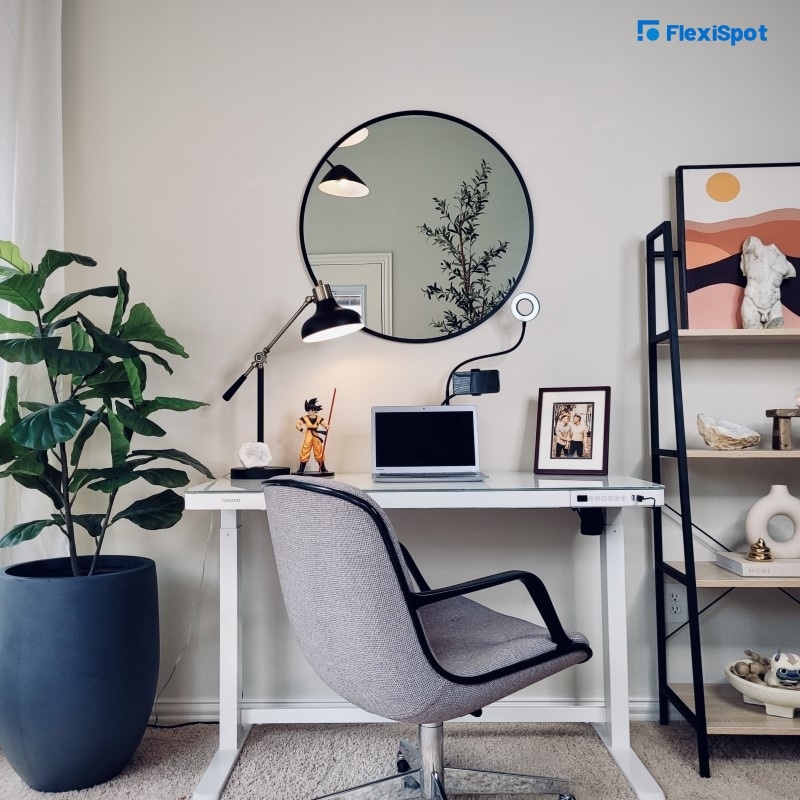Some people think that working from home is the dream life. There would be no need to allocate time for the commute; there would be fewer interruptions, and there’s flexibility and more power to control the environment.
With that said, power comes with a level of responsibility. It requires more thoughtful decisions on the home workspace to ensure efficiency. It could even be located in your very own bedroom that could help one stay safe and energized throughout the day. Plus there are tons of brilliant ideas to choose from in terms of designing the bedroom workstation.
While many still prefer a standalone office, this, however, is not an option available for most so setting up shop in one’s bedroom presents itself as the next best course of action.
Since that’s decided, you should focus on making your home office as ergonomic as possible. What this means is configuring the workspace suited for you and your line of work. When you apply the concepts of ergonomics to the home office space you are about to create, you could be ensured of a work that is effective, secure, and good for your health.
We listed down some things to guide you in making your space as ergonomic as possible.
1. Face your desk away from your bed.
Put your desk in a position where it’s facing a wall or a window. In this way, you won't be distracted by a view of your tempting and irresistible bed loaded with a fluffy mattress and soft pillows.
More importantly, invest in a sit-stand desk, more popularly known as a standing desk or a height-adjustable desk.
We recommend checking out FlexiSpot, a company with a vision to help people lead healthy and active lives by developing and producing ergonomic solutions. It boasts a research and development team of engineers who use groundbreaking technology to turn their genius ideas into working products that increase workplace efficiency even if the said office is at home.
The company’s appealing height-adjustable desks give the full sit-stand experience for people who need a larger workspace and are willing to replace their current desk.

2. Get a comfortable chair.
The chair is also an important consideration when working from home. It will significantly impact your health and the comfort you feel every day. But for instance, if you don’t really use your chair that much, then you have more room to go for something aesthetically pleasing over functionality. Even then, a smarter choice is to make sure your chair is supportive and comfortable, ideally, something ergonomic.
Benefits of ergonomic chairs:
Lessens pain on the neck and back
Improves posture
Height adjustable
Improves Productivity
Uplifts mood and boosts energy
Gives support for premium comfort
3. Separate the sleeping and working areas.
There should be a clear separation between your work and relaxation areas. It’s easier to do so if you have ample space and you could keep your bed and desk a good amount of physical distance. You could also use a curtain or a mirror to distinguish your work and sleep area apart. Aside from space, you can also play with time to delineate between work and play. Close the curtain when done which will help you forget about work once you’re off to relax and rest.
4. Use proper lighting.
It is important to have sufficient lighting for your eyes, efficient work performance, and morale. For bedrooms with windows, place your desk near that strong light source to benefit from the natural light. Keep blinds wholly open or if there’s a glare, open half of it.
For bedrooms without windows, warm overhead lighting could be used such as desk lamps. Refrain from using lighting that casts a shadow on your computer or laptop screen.
5. Install storage solutions to declutter and maximize space.
Declutter your mind by making sure your environment is clean and pleasing to the eyes. You’ll be able to focus on your job and shut down right away when it’s the time of the day to relax. Plus, if there are storage systems in place, items are easier to find and decrease tension.
If you want to be minimalist, scan all of your relevant documents and get rid of the originals after backing them up digitally. If paperwork is needed in your work, use shelves and file storage that will organize your things and make them easily accessible.
6. Consider your roommate if you have one.
Make sure it won’t be too crowded if you add a home office where you also sleep with a roommate. Do your best to separate the two areas as much as possible. Have a compromise on how you could avoid distractions or irritating each other while both of you work.
Final Thoughts
At the end of the day, what matters is there’s a workspace that allows the completion of tasks in the most stress-free and efficient way possible. If that means working from a patio chair, under a weighted blanket on the couch, or having a tiny office space in the bedroom, then so be it.
We probably benefit from detaching work and leisure areas. But don’t close your mind just yet from having a home office in your bedroom because it saves space, it’s convenient and even enjoyable!




